
Tourism in Pakistan
Tourism in Pakistan
|
|
|
|
|
|
|
|
|
|
|
|
|
|
|
|
The Tourism industry in Pakistan has gone through period’s of robust growth and bust, from its heyday during the 1970s when the country received unprecedented amounts of foreign tourists, thanks to the Hippie trail. The main destinations of choice for these tourists were the Khyber Pass, Peshawar, Karachi, Lahore, Swat and Rawalpindi. The tourism industry has declined since the start of War on Terror in 2001.
In October 2006, just one year after the 2005 Kashmir earthquake, The Guardian released what it described as “The top five tourist sites in Pakistan” in order to help the country’s tourism industry. The five sites included Taxila, Lahore, The Karakoram Highway, Karimabad and Lake Saiful Muluk. To promote Pakistan’s unique and various cultural heritage, the Pakistan launched the “Visit Pakistan” marketing campaign in 2007. This campaign involved various events throughout the year including fairs and religious festivals, regional sporting events, various arts and craft shows, folk festivals and several openings of historical museums. In 2009, The World Economic Forum’s Travel & Tourism Competitiveness Report ranked Pakistan as one of the top 25% tourist destinations for its World Heritage sites. Ranging from mangroves in the South, to the 5,000-year-old cities of the Indus Valley Civilization which included Mohenjo-daro and Harappa.
Pakistan’s tourism industry attracted an estimated of 1.1 million foreign tourists annually in 2011 and 966,000 in 2012 contributing $351 million and $369 million respectively. Before declining to 565,212 in 2013 which contributed only $298 million, in 2014, Pakistan received 530,000 foreign tourists contributing $308 million. By comparison, Pakistan’s domestic tourism industry is estimated at 50 million domestic tourists who travel within the country on short trips usually travelling between May to August. The largest tourism inflow in 2010 was from United Kingdom, followed by United States, India and China. In 2010 Lonely Planet termed Pakistan as being “tourism’s ‘next big thing’ for more years than we care to remember. [But] world media headlines [always] send things off the rails”.
Overview
The country’s attraction range from the ruin of the Indus Valley Civilization such as Mohenjo-daro, Harappa and Taxila, to the Himalayan hill stations, which attract those interested in winter sports. Pakistan is home to several mountain peaks over 7000 m, which attracts adventurers and mountaineers from around the world, especially K2. The north part of Pakistan has many old fortresses, ancient architecture and the Hunza and Chitral valley, home to small pre-Islamic Animist Kalash people community. The romance of the historic Khyber Pakhtunkhwa province is timeless and legendary, Punjab province has the site of Alexander’s battle on the Jhelum River and the historic city Lahore, Pakistan’s cultural capital, with many examples of Mughal architecture such as Badshahi Masjid, Shalimar Gardens, Tomb of Jahangir and the Lahore Fort. Before the Global economic crisis Pakistan received more than 500,000 tourists annually. However, this number has now come down to near zero figures since 2008 due to instability in the country and many countries declaring Pakistan as unsafe and dangerous to visit.
UNESCO World Heritage Sites
Currently Pakistan has six major cultural sites that are categorised as UNESCO World Heritage Sites. They are:
- Archaeological Ruins at Moenjodaro of the Indus Valley Civilization.
- 1st Century Buddhist Ruins at Takht-i-Bahi and Neighbouring City Remains at Sahr-i-Bahlol.
- The ruins of Taxila from the Gandhara Civilization
- The Lahore Fort and Shalimar Gardens in Lahore.
- Historic Monuments of the ancient city of Thatta.
- The ancient fort of Rohtas.
- The Kabule Gate
Tentative List
During the period of 1993–2004, Pakistan was unable to submit information to UNESCO which delayed several sites to be categorised as potential World Heritage Sites. In 2004, the Ministry of Tourism was given funding to continue its research and ten sites were placed onto UNESCO Tentative List. In total, eighteen sites are awaiting to be categorised as of April 2014 which include:
- Badshahi Mosque, Lahore – Mosque built in 1673 during Mugal Empire.
- Wazir Khan Mosque, Lahore – Mosque built in 1635 by Shah Jahan.
- Tombs of Jahangir, Asif Khan and Akbari Sarai, Lahore – Mausoleum built in 1627.
- Hiran Minar and Tank, Sheikhupura – Built by Mughal Emperor, Jahangir in 1606.
- Tomb of Shah Rukn-e-Alam, Multan – Tomb for sufi Rukn-e-Alam.
- Rani Kot Fort, Dadu – One of the largest Fort in the world.
- Shah Jahan Mosque, Thatta – Mosque built in 1647.
- Chaukhandi Tombs, Karachi – Tombs built during Mughal Empire.
- Mehrgarh, Balochistan – one of the oldest Neolithic ruins and archaeological sites.
- Rehman Dheri, Dera Ismail Khan – Historical ruins of Indus Valley Civilization.
- Harappa, Punjab – Historical ruins of the Bronze Age.
- Ranigat, Khyber Pakhtunkhwa – Archaeological remains of Buddhist monastic complex.
- Shahbazgarhi Rock Edicts, Mardan – Inscriptions of the Mauryan emperor, Ashoka.
- Mansehra Rock Edicts, Mansehra- Earliest writings of the 3rd century BC.
- Baltit Fort, Hunza Valley – Tibetan style Fort built in the 13th century.
- Tomb of Bibi Jawindi, Baha’al-Halim and Ustead, Mosque of Jalaluddin Bukhari, Uch Sharif – Five monuments of historical figures.
- Port of Banbhore – Archaeological site of historical port city on the Indus River.
Other Landmarks
Furthermore, there are several landmarks and structures that have not yet made the UNESCO Tentative List. Long before the creation of Pakistan in 1947, there were plenty of cultures and religions that existed before the independence. Pakistan being the centre of various wars led to several dynasties and tribes ruling its lands. They left various landmarks behind which some have become national icons whilst others needing the attention of concerned authorities. Some of these include:
- Faisalabad Clock Tower and the Eight Bazaars
- Altit Fort in Hunza Valley
- 17th and 18th century Tombs of Talpur Mirs
- Faiz Mahal of the Talpur Mirs
- Samadhi of Ranjit Singh
- Mughal built tomb of Asaf Khan at Shahdara Bagh
- Empress Market built during the rule of the British Empire
- The tomb of Qutb-ud-din Aibak the first Sultan of Delhi and founder of the Slave dynasty.
- Mohatta Palace (built in 1927)
- 18th century Omar Hayat Mahal
- 19th Century Italian chateau Noor Palace
- Derawar Fort
- Mughal-built Hiran Minar
- Khewra Salt Mines, one of the oldest salt mines in Asia
- The 3000BC built fort of Kot Diji and Faiz Mahal in Khairpur
- 16th century built fort at Skardu
- Nagar Fort – Chitral.
Post-independence Pakistan retained its heritage by constructing various sites to commemorate its independence by blending various styles and influences from the past. Some of these include:
- Minar-e-Pakistan in Lahore.
- Grand Jamia Mosque, Lahore
- Faisal Mosque in Islamabad.
- The mausoleum of the founder of Pakistan, Mohammad Ali Jinnah.
- Bab-e-Pakistan a memorial site for the victims of the independence.
- Pakistan Monument in Islamabad.
- The mausoleum of Allama Muhammad Iqbal.
Infrastructure and the economy
Main articles: Economy of Pakistan, Transport in Pakistan, and Telecommunications in Pakistan

The mausoleum of Shah Rukn-e-Alam
Tourism is a growing industry in Pakistan. With more and more foreign investment and funding, Pakistan was able to build its major road and air networks to cater mass movements of cargo and inter-city travel. Roads are being developed by several consultants from the Northern Areas all the way down to the Port of Karachi. However, till this date, the government has not be able to take the tourism market seriously within Pakistan. Pakistan is home to a diverse number of tourist attractions which have not been funded or protected due to the government giving the tourism market a low priority.
Several statistics from the last decade show tourism is a “market led industry and not supply driven” which has led a large decline in travel to Pakistan. This has led to fewer tour agencies being set up and development of historical sites. It has been estimated that the public and private sectors have gradually earned less income from the tourism market causing less investment and innovation within the industry. This has led to several sites to depreciate over time and the lack of Minimum International Standards have left many sites in poor states. The latest budget showed that less money was being spent on research and marketing and more on defence and other fixed markets.
The 2008 World Economic forum’s Travel and Tourism Competitiveness Report (TTCR) ranked Pakistan 75 out of 124 countries. low branding and marketing effectiveness and low priority the government gave to the travel and tourism industry. Despite various campaigns such as the Visit Pakistan 2007 scheme the number of tourists dropped each year. This year it dropped by 6% as compared to the figures of last year.
Pakistan Tourism Development Corporation
Many critics have encouraged the government to again attract tourists to Pakistan by initiating the sponsorship of new businesses within the tourist market. Building and maintaining the road and air networks to meet international standards. The maturation of human and natural resources can also contribute in development of this feeble industry. Advertising campaigns need to attract tourist by developing holiday packages tailored to explore the greater regions of the country.
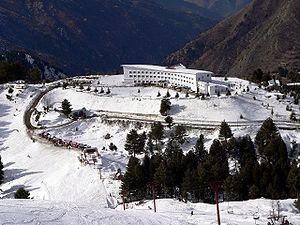
PTDC Motel at Malam Jabba Ski Resort.
In September 2004 with the bifurcation of the Minorities, Culture, Sports, Tourism and Youth Affairs, Tourism was given a separate status of Ministry of Tourism. The Ministry of Tourism was responsible for the policy formulation, development, marketing and promotion of both foreign and domestic tourism besides coordination and regulating of federal and provincial governments and private sector activities responsible and involved in tourism.

South Korean tourists in Golden Peak in Hunza–Nagar District
However, it was not able to achieve any of its objectives for tourism industry and therefore it was abolished under Constitutional requirements in Pakistan on June 30, 2011. The promotions of tourism was transferred to the provinces. Now each province runs its own organization that is responsible for tourism in their province. It is now part of Pakistan Tourism Development Corporation or PTDC. It is now responsible for the development of tourism sector.
- Tourism Development Corporation of Punjab (TDCP) is working in Punjab for the promotion of tourism sector.
- Culture Tourism And Antiquities Department – Sindh
- Department of Tourism – Khyber Pakhtunkhwa
- Secretary of Culture, Tourism & Archive – Baluchistan
- Tourism, Sports, Culture and Youth Department – Gilgit-Baltistan
- Department of Tourism – Azad Jammu and Kashmir
Tourism by subdivisions
Pakistan is subdivided into four provinces, one federal capital territory, and a group of federally administered tribal areas. The four large provinces are what make up the majority of Pakistan which include Balochistan, Khyber Pakhtunkhwa, Punjab and Sindh. The Islamabad Capital Territory is home to the Pakistani capital, Islamabad. Finally, leaving Federally Administered Tribal Areas, Azad Jammu and Kashmir and Gilgit-Baltistan the minor territories under Pakistan control.
Balochistan
|
|
|
|
|
Balochistan is the largest province by geographical area of Pakistan, constituting approximately 43% of the total area of Pakistan. Balochistan is home to one of the oldest Neolithic (7000 BC to c. 2500 BC) sites in archaeology. Mehrgarh and Nausharo, was an ancient city linked to the Indus Valley Civilization. Another ancient sites dating back 800 years are the Nausherwani tombs at Qila Ladgasht. There was also an ancient port at the site of Oraea which proved to be a useful port during the Hellenistic civilisation.
Quetta is the provincial capital of Balochistan. There are a number of sites of interest including the protected Hazarganji-Chiltan National Park, Hanna Lake, Quetta Geological Museum, Balochistan Arts Council Library, Quetta Archaeological Museum as well as Command and Staff College Museum. The Quaid-e-Azam Residency is another major site in Balochistan in the city of Ziarat. Ziarat is also famous for the juniper forests which are the oldest and largest in the world. Sibi, is an important historical city in Balochistan. The Jigra Hall has a collection of pieces found at the archaeological sites of Mehrgarh, Nasshero and Pirak. The annual Sibi Festival marks the famous Horse and Cattle Show.
There are a number of mountain passes within Balochistan. The Bolan Pass has been the main entrance to the provincial city of Quetta. There are several others including Lak Pass, Khojak Pass and Harnai Pass. The Balochistan coastline extends from the Sindh province to the Iranian border measuring a total distance of over 750 km. The city of Gwadar holds the largest port in the province which is based near the ancient area of Makran. Pasni is another beautiful medium-sized town famous for fishing. Along the Makran Coastal Highway there are several rock formations as well as Kund Malir and the Hingol National Park.
Khyber Pakhtunkhwa (KPK)
 Utror |
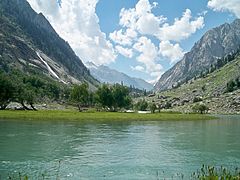 Swat Valley |
 Tourists playing cricket in Chitral |
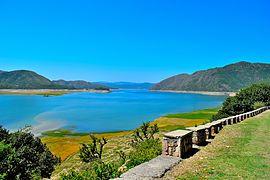 Haripur |
Khyber Pakhtunkhwa is located in the north-west region of Pakistan. It is known as the tourist hotspot for adventurers and explorers. The province has a varied landscape ranging from rugged mountains, valleys, hills and dense agricultural farms. The region is well known for its ancestral roots. There are a number of Buddhist archaeological sites from the Gandhara civilisation such as Takht Bhai and Pushkalavati. There are a number of other Buddhist and Hindu archaeological sites including Bala Hisar Fort, Butkara Stupa, Kanishka stupa, Chakdara, Panjkora Valley and Sehri Bahlol.
Peshawar is the provincial capital of Khyber Pakhtunkhwa. The city is home to a number of sites including Bala Hisar Fort, Peshawar Museum, archaeological site of Gor Khuttree, Mohabbat Khan Mosque, old city of Sethi Mohallah, Jamrud Fort, the Sphola Stupa and the most famous market of Qissa Khawani. The city of Dera Ismail Khan is known to be the entrance into the province from Punjab and Balochistan. The city is famour for its Hindu ruins at Kafir Kot. The Buddhist ruins at Shahbaz Garhi are also famous in the city of Mardan. Heading North, the divisions Swat valley One of the most important cities in the province is Mansehra. The city is a major stop for tourists setting out to the Northern Areas and Azad Kashmir. The city is connected by the famous Karakoram Highway which ends up in China. Along the route there are several stops including the Kaghan Valley, Balakot, Naran, Shogran, Lake Saiful Mulook and Babusar Top. There are also several other sites within the province which attract a large number of tourist every year including Ayubia, Batkhela, Chakdara, Saidu Sharif, Kalam Valley and Hindu Kush mountain range in Chitral.
There are also several mountain passes that run through the province. One of the most famous is the Khyber Pass which links Afghanistan with Pakistan. The trade route sees a large number of trucks and lorries importing and exporting goods in and out of the region. The Babusar Pass is another mountain pass connecting the Thak Nala with Chilas on the Karakorum Highway. The Lowari Pass is another pass which connects Chitral with Dir via the Lowari Tunnel. The highest mountain pass in Pakistan is Shandur Pass which connects Chitral to Gilgit and is known as the Roof of the World. The pass is the centre of three mountain ranges – Hindukush, Pamir and Karakoram.
Punjab
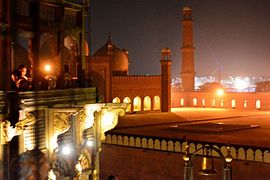 View of Badshahi Mosque from nearby cafe’s View of Badshahi Mosque from nearby cafe’s |
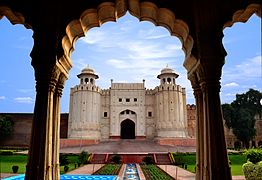 Lahore Fort Lahore Fort |
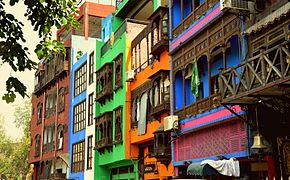 One of the several food streets in Lahore One of the several food streets in Lahore |
 Noor Mahal is a popular tourist sight Noor Mahal is a popular tourist sight |
Punjab is the second largest province in Pakistan. It is known for its ancient cultural heritage as well as its religious diversity. The lands of Punjab have been home to a number of religions and civilisations. The Indus Valley Civilization once ruled the region and a significant archaeological find was discovered at the ancient city of Harrapa. The Gandhara civilisation was also quite dominant in the northern region of Punjab at the site of Taxila. Several other civilisations such as Greeks, Central Asians, and Persians ruled Punjab leaving a number of sites which still exist today. The arrival of Islam came about during the rule of the Umayyad Caliphate followed by the Ghaznavids. The Mughals took control of the region and ruled its land for several centuries. The mughal heritage remained quite strong in Punjab with a large number of forts, tombs and monuments still intact today. The Durrani Empire ruled the Punjab at the fall of the Mughal Empire for a short period following the rise of the Sikh Empire. The strong control of the Sikhs also lead to a number of sites still remaining intact throughout Punjab. The British Raj took control of the region until the independence.
Tourism in Punjab is regulated by the Tourism Development Corporation of Punjab.[28] There are a number of large cosmopolitan cities in Punjab. The provincial capital, Lahore is the second largest city of Pakistan as is known to the Cultural Heart of Pakistan. The Mughal Empire left behind the Lahore Fort and Shalimar Gardens which are now recognised World Heritage Sites. The Walled City of Lahore, Badshahi Mosque, Wazir Khan Mosque, Tomb of Jahangir and Nur Jahan, Tomb of Asaf Khan and Chauburji are other major sites visited by tourists each year. The tomb of Qutb-ud-din Aibak from the Delhi Sultanate is located in the historical market of Anarkali Bazaar in Lahore. The Samadhi of Ranjit Singh and Hazuri Bagh Baradari are prime example of Sikh architecture during the rule of the Sikh Empire. There a number of other sites within Lahore such as Minar-e-Pakistan, Lahore Museum, Data Durbar Complex, Tomb of Muhammad Iqbal, Bagh-e-Jinnah, Lahore Zoo, Tomb of Shah Jamal, Sukh Chayn Gardens, Gaddafi Stadium which all create a large number of visitors annually.
Rawalpindi is known to be a famous hill station stop for tourists before setting out to Murree, Bhurban, Patriata, Northern Areas, Azad Kashmir and Gilgit-Baltistan.[29] The Pharwala Fort is a major fort on the outskirts of the city built by an ancient Hindu civilisation. There are a number of sites from the Mughal Empire in the city of Sheikhupura called Hiran Minar and the Sheikhupura Fort. The Rohtas Fort near Jhelum is a major fort built by Sher Shah Suri is a World Heritage Site. The Katasraj temple in the city of Chakwal is a major destination for Hindu devotees. The Khewra Salt Mines is another major tourist attraction as its one of the oldest mines in South Asia. The city of Nankana Sahib is birthplace of the founder of Sikhism. The Gurdwara is visited by a number of pilgrims ever year to mark Guru Nanak Dev birthday. Another famous gurdwara in Punjab is Panja Sahib located in the city of Hasan Abdal. The clock tower and eight bazaars of Faisalabad are famous for its bazaars since they were designed to represent the Union Jack flag.
Travelling southwards, the region starts to become more desertic. Multan is another major tourist destination in Punjab. It is known for its mausoleums of saints and Sufi pirs. The most famous being the Rukn-e-Alam and Baha-ud-din Zakariya. The Multan Museum and Nuagaza tombs are so significant attractions in the city. The city of Bahwalpur is a major destination as it is located near the Cholistan Desert and Thar Desert. The Derawar Fort is a large fort built in the Cholistan Desert which is also the site for the annual Cholistan Jeep Rally. The city is also near the ancient site of Uch Sharif which was once a Delhi Sultanate stronghold. The Noor Mahal, Sadiq Ghar Palace, Darbar Mall are large palaces built during the reign of the Nawabs. The Lal Suhanra National Park is a major zoological garden on the outskirts of the city.
Sindh
 Frere Hall in Karachi |
|
|
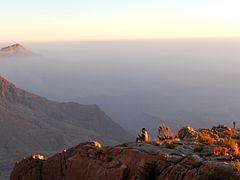 Gorakh Hill Gorakh Hill |
Sindh is located in the south-eastern region of Pakistan. The province is known for its religious heritage and rapid-urbanisation. The province is home to the ancient Indus Valley Civilisation. Mohenjo-daro near the city of Larkana was one of the largest city-settlements in South Asia and is an official UNESCO World Heritage Site. The Chaukhandi tombs are another example of ancient Sindhi and Balochi heritage located near the town of Landi. Another ancient city, Aror, located near the city of Sukkur is also a famous tourist spot for its ruins. Kahu-Jo-Darro is a famous ancient Buddhist archaeological site near Mirpurkhas were a Buddhist stupa was excuvated.
The first arrival of Islam in the South Asia took place in Karachi, Sindh, Pakistan. There has been a number of sites within the province that have led archaeologists to suggest this. Makli Hill is one of the largest necropolises in the world. The site is home to a number of ancient tombs and graves of Islamic dynasties. The Talpur Mirs of Hyderabad also left a number of sites including, Tombs of Talpur Mirs, Faiz Mahal in Khairpur, Qasim fort, Pacco Qillo and the Kot Diji Fort in Kot Diji. Another famous fort built during the Islam invasion was the Ranikot Fort. Like other provinces, Sindh has a number of cultural shrines and mausoleums including Thatta, Shah Abdul Latif Bhittai, Lal Shahbaz Qalander, Shahjahan Mosque, Mazar-e-Quaid, Minar-e-Mir Masum Shah, Bhambore and Garhi Khuda Bakhsh.
Karachi is the provincial capital of the province and largest city of Pakistan. It is home to the founder of the nation, Mohammad Ali Jinnah. His tomb, Mazar-e-Quaid, is the most iconic mausoleum in Pakistan. The city has the largest port in the country, Port of Karachi, followed by the second largest, Port Qasim. Karachi has also been ruled under a number of tribes which meant the city is home to a number of cultural sites including, Mohatta Palace, National Museum of Pakistan, Empress Market, Frere Hall, Jehangir Kothari Parade, Karachi Municipal Corporation Building and the Hindu Gymkhana. There are also several beaches within the city, some of the most famous are Clifton Beach, French Beach, Sandspit Beach and Manora Island.
The province also forms the basin for the Indus river. This has led to a number of lakes being formed in the province. Some of the most notable ones include: Keenjhar Lake, Manchar Lake and the Bakri Waro Lake in Khairpur. The Kirthar National Park is also a protected reserve for several wildlife within the region. The Thar Desert is also located in the province which adjorns it to Punjab and India. The Great Rann of Kutch is a protected wetland site in the province. There are two wildlife sanctuaries in the province: Rann of Kutch Wildlife Sanctuary and the Nara Desert Wildlife Sanctuary. The Sukkur Barrage is another famous icon in the province it was built to alleviate famines caused by lack of rain.
Port Grand Food and Entertainment Complex is a recreational area built in the centre of Karachi, Pakistan along the waterfront of the 19th century Native Jetty Bridge that connects the Karachi Port Trust to Keamari. The complex is expected to attract up to 5,000 visitors a day and is a major hub of shopping, dining, cultural and coastal recreational activities in the city. Port Grand is located on Napier Mole Bridge a site that is very significant to the history of Karachi and has played a crucial role in making it the city it is today. The project stretches along 1,000 ft of Karachi’s ancient 19th century Native Jetty Bridge and spreads over an area of 200,000 sq. ft. The one kilometre bridge has been transformed into an entertainment and food enclave housing numerous eateries totalling 40,000 sq. ft of climate-controlled area and space for kiosks of exotic Pakistani and foreign food and a variety of beverages. To get to the Port Grand from anywhere in the city, Port Grand is a straight shot west out of Mai Kolachi, adjacent to the PNSC Building as the road curves into the facility on the right.
Azad Kashmir and Gilgit-Baltistan
|
|
|
|
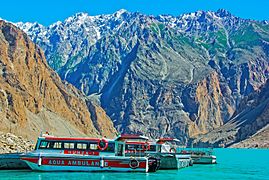 Ambulance on Attabad Lake Hunza Ambulance on Attabad Lake Hunza |
Azad Kashmir is the region of Pakistan situated in Northern part of the country.
The northern part of Azad Jammu and Kashmir encompasses the lower part of the Himalayas, including Jamgarh Peak (15,531 feet [4,734 meters]). However, Sarwali peak in the Neelum Valley is the highest peak in the state. Fertile, green, mountainous valleys are characteristic of Azad Kashmir’s geography, making it one of the most beautiful regions on the subcontinent.
The southern parts of Azad Kashmir including Bhimber, Mirpur and Kotli districts has extremely hot weather in summers and moderate cold weather in winters. It receives rains mostly in monsoon weather.In the central and northern parts of state weather remains moderate hot in summers and very cold and chilly in winter. Snow fall also occurs there in December and January. This region receives rainfall in both winters and summers. Muzaffarabad and Pattan are among the wettest areas of the state. Throughout most of the region, the average rainfall exceeds 1400 mm, with the highest average rainfall occurring near Muzaffarabad (around 1800 mm). During summer, monsoon floods of the Jhelum and Leepa river are common, due to high rainfall and melting snow.
Islamabad
|
|
|
|
 Daman-e-Koh Daman-e-Koh |
Main places
| Valleys | Lakes | River |
|
|
|
|
|
|
|
|
|
|
|
|
|
|
|
|
|
|
|
|
|
|
|
|
|
|
|
|
|
|
|
|
|
|
|
|
|
|
|
|
|
|
|
||
|
||
|
Categories: Culture & Tradition

 Gilgit-Baltistan’s Ghanche District.
Gilgit-Baltistan’s Ghanche District.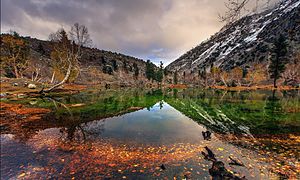 Naltar Valley is a popular destination
Naltar Valley is a popular destination Upper Naltar Valley of the Gilgit
Upper Naltar Valley of the Gilgit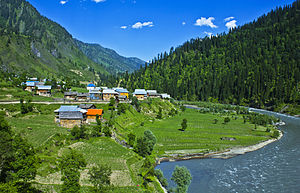 Neelum Valley
Neelum Valley Deosai Plains
Deosai Plains Site#140: Buddhist ruins at Takht Bhai
Site#140: Buddhist ruins at Takht Bhai The Mohatta Palace
The Mohatta Palace The Chaukhandi Tombs
The Chaukhandi Tombs Site#171: Lahore Fort & Shalamar Gardens
Site#171: Lahore Fort & Shalamar Gardens
 Badshahi Mosque
Badshahi Mosque The Alamgiri Gate at Lahore Fort
The Alamgiri Gate at Lahore Fort Kund Malir
Kund Malir
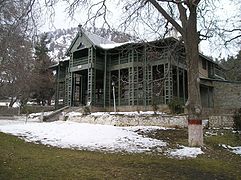 Quaid-e-Azam Residency
Quaid-e-Azam Residency
 Hawk’s Bay
Hawk’s Bay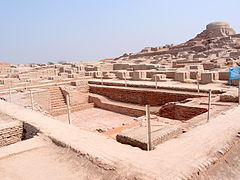 Mohenjo-daro
Mohenjo-daro Shangrila Lake and adjoing resort
Shangrila Lake and adjoing resort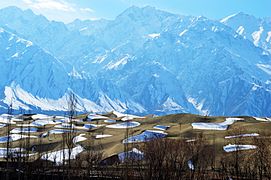 Cold Desert, Skardu is the world’s highest desert.
Cold Desert, Skardu is the world’s highest desert. Naran, Kaghan Valley
Naran, Kaghan Valley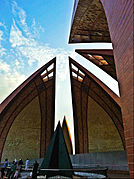 Pakistan National Monument
Pakistan National Monument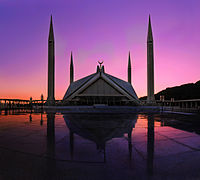 Faisal Mosque
Faisal Mosque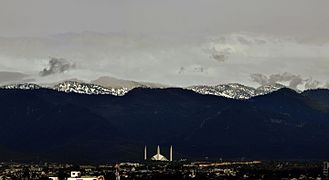 Snow capped Margalla Hills National Park
Snow capped Margalla Hills National Park